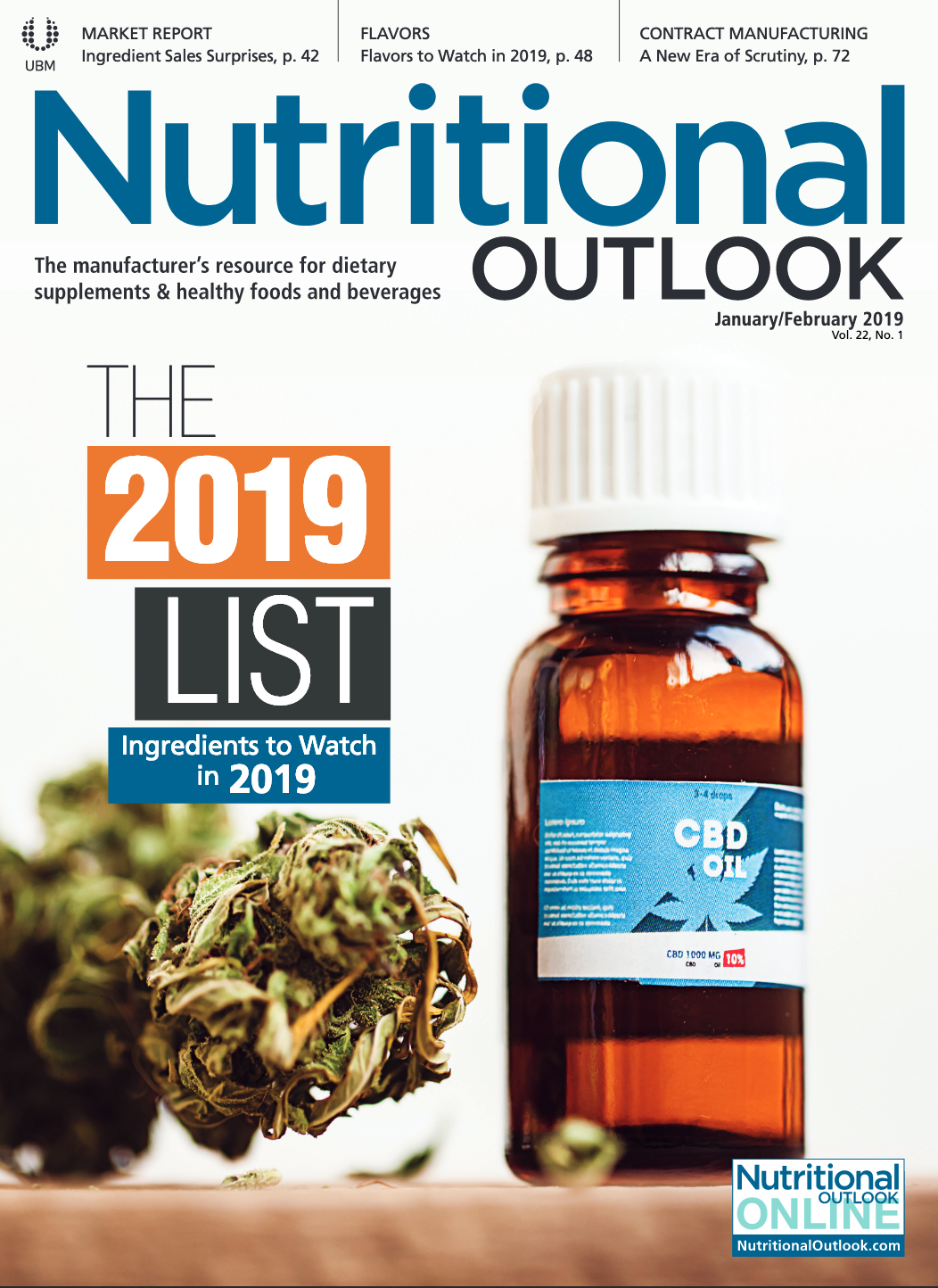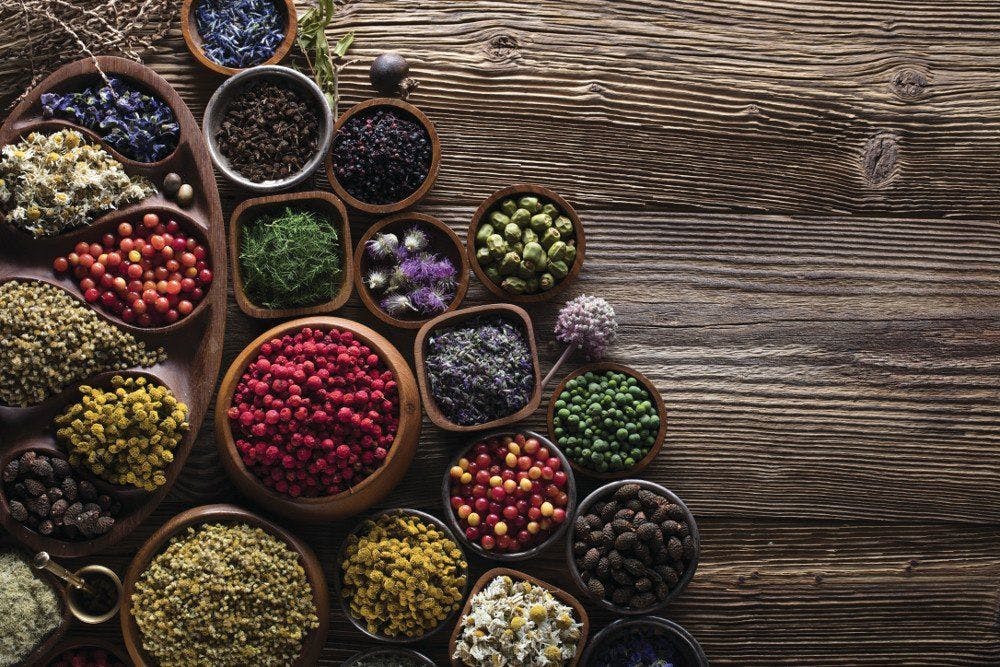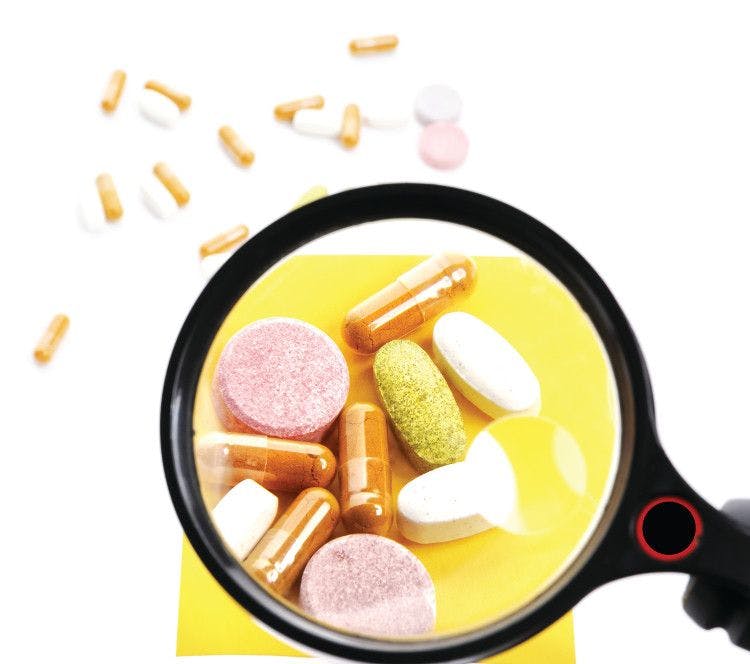2019 Ingredient trends to watch for food, drinks, and dietary supplements: Turmeric
Turmeric is living an ingredient's dream: mainstream growth that shows no sign of stopping. How are marketers appealing to the masses?
Photo © AdobeStock.com/monticellllo

Turmeric (Curcuma longa) continues to climb the sales charts. In 2017, turmeric ranked as the 5th-top-selling mainstream herbal supplement ingredient in the U.S., up from its 10th-place spot a year ago, according to the American Botanical Council’s latest HerbalGram Herb Market Report. In 2017, turmeric sales in the U.S. mainstream retail channel grew 46.7% over the previous year, roughly a $10.3 million increase, to over $32 million. And in the natural channel, where turmeric got its start, the ingredient remained the number-one-selling herbal ingredient, with sales growing 12.2% to over $50 million, according to the report.
Turmeric is established within the Indian traditional medicinal system of Ayurveda, but extensive research on turmeric’s active constituent, curcumin, has given the ingredient credibility among modern researchers and a wider mainstream audience as more curcumin supplements hit the market. “There are over 9,000 peer-reviewed articles published on turmeric, especially on curcumin and its wide range of health effects,” says Shaheen Majeed, president worldwide, Sabinsa (East Windsor, NJ), to Nutritional Outlook. “Acceptance by the medical community because of this research has undoubtedly contributed to curcumin’s remarkable popularity.”
Supplement applications are demonstrating greater versatility, giving consumers products that range from traditional herbal supplements to functional beverages and shots. Supplement-grade curcumin dosage forms have advantages over food-grade turmeric. “As a food, turmeric supports your ojas (vital energy), and, being a bitter herb, it supports digestion, too; however, turmeric root powder as a food ingredient/spice doesn’t offer the same targeted support that a supplemental extract does,” explains Stacey Gillespie, Gaia Herbs’ director of product strategy. “The fat-soluble active components of turmeric, including its essential oils, need to pass the blood-brain barrier to offer neurological support as well as support for any of the other targeted areas.”
Combining turmeric’s importance in Ayurveda and the efficacy of modern turmeric supplements encourages health-minded consumers to incorporate turmeric and other Ayurvedic herbs into their lifestyles in a variety of ways. “Traditionally, consumers in the U.S. have preferred tablet and capsule forms, but increasingly, there is interest in alternative delivery forms like beverages, powder premixes, and ready-to-drink beverages,” says Majeed. “In some other countries, such as Japan, beverages are extremely common delivery formats, and we anticipate more of that in the U.S. To facilitate use of our Curcumin C3 Complex in beverages, we developed a water-soluble form, uC3 Clear.”
Gaia Herbs sells its Turmeric Boost Uplift powder and Golden Milk, meant to mix in liquid. “These alternative delivery formats have been very successful and well received,” says Gillespie. “Our Golden Milk product is the number-one-selling turmeric powder in the natural channel. In the case of our Golden Milk, in particular, people are choosing this product as part of their daily wellness plan in order to help them find a moment of mindfulness, while nourishing the body with health-promoting turmeric.”
While the top-selling turmeric products have been marketed for non-specific health conditions, according to HerbalGram, mainstream consumers are increasingly interested in condition-specific turmeric products. In terms of health focus, according to market researcher SPINS, in 2018 turmeric ingredient sales still dominated the pain and inflammation category, with sales in the U.S. remaining stable in the natural channel and increasing by 20.9% in the specialty foods channel in the 52 weeks ending November 4, 2018. In relation to inflammation and pain, turmeric also takes a top spot in the joint-health category in the U.S. conventional multioutlet channel and natural channels, with sales increasing by 32.2% and 12.2% respectively, according to SPINS.
As research into turmeric persists, the ingredient’s anti-inflammatory and antioxidant benefits translate to other areas as well. Recent research, for example, involves the microbiome. “A recent double-blind, randomized, placebo-controlled clinical study investigated the impact of curcuminoids on the gut microbiome in humans for two months1,” says Majeed, pointing to the study done on Sabinsa’s ingredient. “Curcuminoids were found to have a unique role and effect on the gut microbiome by increasing the population of several species, which attribute the ‘prebiotic-like’ effects to suitable alterations of host physiology congenial to the growth of beneficial microbiota.”
According to Gillespie, brain-health turmeric formulations are on the rise. “Research has shown there is a link in declining cognitive health and inflammation,” she says. “Turmeric extract is included in supplements for the brain because of this herb’s ability to help maintain a healthy inflammatory response. Curcumin, the primary active compound found in turmeric, is also known to cross the blood-brain barrier.”
Majeed agrees. “Curcumin has many beneficial effects for seniors, including neuroprotection,” he says. “Sabinsa is working with university researchers on conducting clinical trials on these lines.”
2019 Ingredient Trends to Watch for Food, Drinks, and Dietary Supplements:
- Turmeric
References:
- Peterson CT et al. “Curcumin C3 Complex had a positive influence on Bacteroidetes among others thus demonstrating for the first time in a human clinical study the beneficial effect of curcuminoids on gut microbiota population redistribution.” Journal of Evidence-Based Integrative Medicine, vol. 23 (2018): 1-8


























